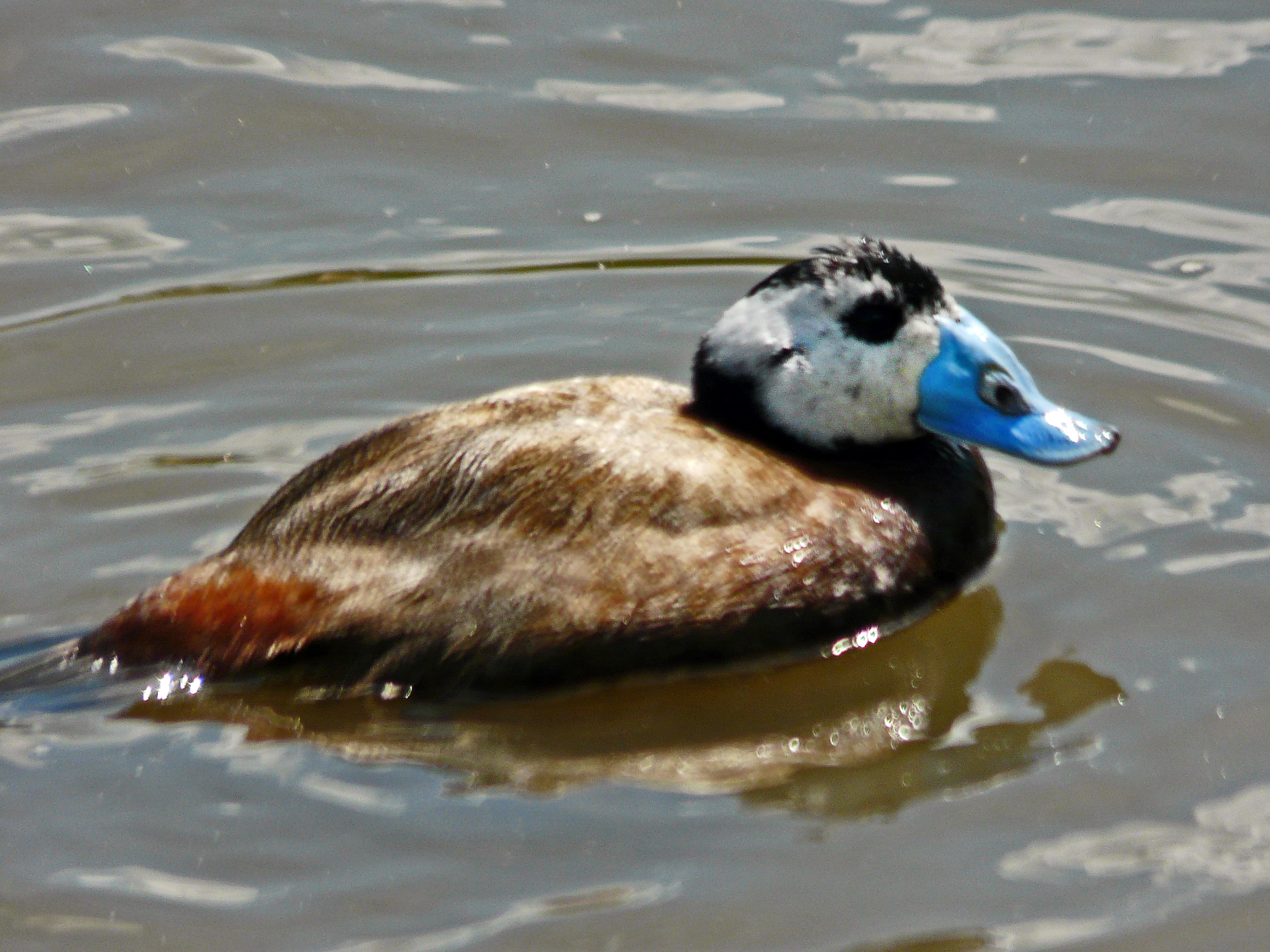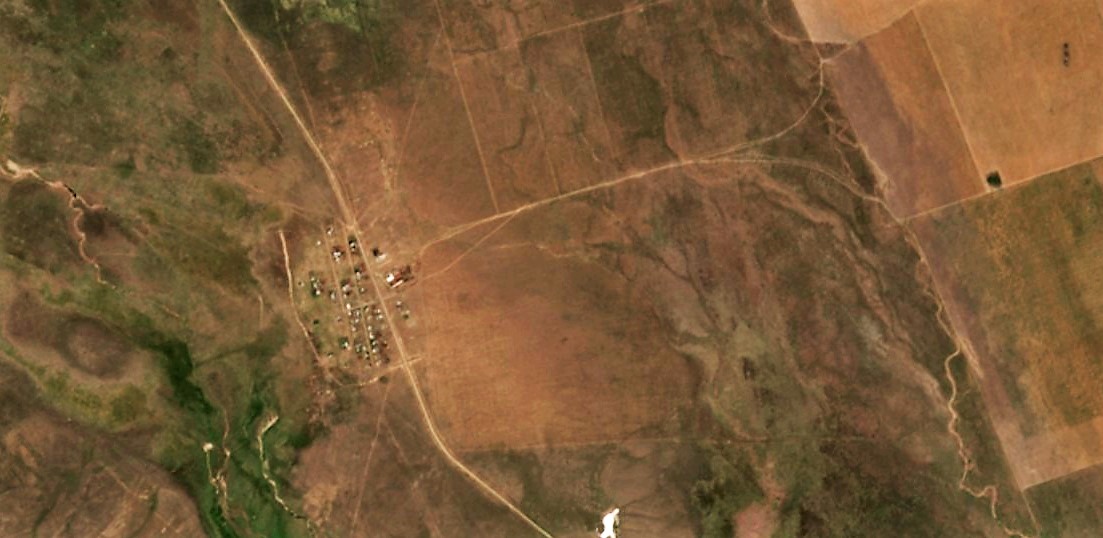|
Saumalkol (Karasor Basin)
Saumalkol (; ) is a salt lake in northwestern Karkaraly District, Karaganda Region, Kazakhstan. The lake is located to the northwest of Karkaraly city. The nearest inhabited place is Saumalkol railway station to the southwest. The lake is a Important Bird Area part of the Korgalzhyn Nature Reserve. Geography Saumalkol is an endorheic lake in the central Kazakh Uplands. It lies at the feet of the southern slopes of the Ayr Mountains. Located to the west of the western end of lake Karasor, it is the second largest of the lakes of the Karasor Basin, a vast depression. The southern shore of the lake is flat, but the northern is steep with up to high cliffs. There is a small peninsula in the northern shore. The lake is shallow, with a maximum depth of to . Its water is salty and hard and the bottom of the lake is muddy, having a smell of hydrogen sulfide. The lake is fed mainly by snow and groundwater. Two rivers having their sources in the Ayr Mountains, a long and a long ... [...More Info...] [...Related Items...] OR: [Wikipedia] [Google] [Baidu] |
Sentinel-2
Sentinel-2 is an Earth observation mission from the Copernicus Programme that acquires optical imagery at high spatial resolution (10 m to 60 m) over land and coastal waters. The mission's Sentinel-2A and Sentinel-2B satellites were joined in orbit in 2024 by a third, Sentinel-2C, and in the future by Sentinel-2D, eventually replacing the A and B satellites, respectively. The mission supports services and applications such as agricultural monitoring, emergencies management, land cover classification, and water quality. Sentinel-2 has been developed and is being operated by the European Space Agency. The satellites were manufactured by a consortium led by Airbus Defence and Space in Friedrichshafen, Germany. Overview The Sentinel-2 mission includes: * Multispectral image, Multi-spectral data with 13 bands in the Visible spectrum, visible, Infrared#Regions within the infrared, near infrared, and Infrared#Regions within the infrared, short wave infrared part of the Electromagnetic ... [...More Info...] [...Related Items...] OR: [Wikipedia] [Google] [Baidu] |
Hard Water
Hard water is water that has a high mineral content (in contrast with "soft water"). Hard water is formed when water percolates through deposits of limestone, chalk or gypsum, which are largely made up of calcium and magnesium carbonates, bicarbonates and sulfates. Drinking hard water may have moderate health benefits. It can pose critical problems in industrial settings, where water hardness is monitored to avoid costly breakdowns in boilers, cooling towers, and other equipment that handles water. In domestic settings, hard water is often indicated by a lack of foam formation when soap is agitated in water, and by the formation of limescale in kettles and water heaters. Wherever water hardness is a concern, water softening is commonly used to reduce hard water's adverse effects. Origins Natural rainwater, snow and other forms of precipitation typically have low concentrations of divalent cations such as calcium and magnesium. They may have small concentrations of ion ... [...More Info...] [...Related Items...] OR: [Wikipedia] [Google] [Baidu] |
Endorheic Lakes Of Asia
An endorheic basin ( ; also endoreic basin and endorreic basin) is a drainage basin that normally retains water and allows no outflow to other external bodies of water (e.g. rivers and oceans); instead, the water drainage flows into permanent and seasonal lakes and swamps that equilibrate through evaporation. Endorheic basins are also called closed basins, terminal basins, and internal drainage systems. Endorheic regions contrast with open lakes (exorheic regions), where surface waters eventually drain into the ocean. In general, water basins with subsurface outflows that lead to the ocean are not considered endorheic; but cryptorheic. Endorheic basins constitute local base levels, defining a limit of the erosion and deposition processes of nearby areas. Endorheic water bodies include the Caspian Sea, which is the world's largest inland body of water. Etymology The term ''endorheic'' derives from the French word , which combines ( 'within') and 'flow'. Endorheic lakes ... [...More Info...] [...Related Items...] OR: [Wikipedia] [Google] [Baidu] |
Lakes Of Kazakhstan ...
Excluding the northernmost districts, Kazakhstan consists of endorheic basins, where rivers flow into one of the numerous lakes. The most important drainage system is known as Yedisu, meaning "seven rivers" in Turkic languages. Below is a list of the more important lakes, some of which are shared (Caspian Sea, Lake Aral, Lake Aike, etc.) with the neighbouring countries. See also * Sor (geomorphology) References {{Europe topic, List of lakes of * Lakes Kazakhstan Kazakhstan, officially the Republic of Kazakhstan, is a landlocked country primarily in Central Asia, with a European Kazakhstan, small portion in Eastern Europe. It borders Russia to the Kazakhstan–Russia border, north and west, China to th ... [...More Info...] [...Related Items...] OR: [Wikipedia] [Google] [Baidu] |
Common Goldeneye
The common goldeneye or simply goldeneye (''Bucephala clangula'') is a medium-sized sea duck of the genus ''Goldeneye (duck), Bucephala'', the goldeneyes. Its closest relative is the similar Barrow's goldeneye. The genus name is derived from the Ancient Greek ''boukephalos'' ("bullheaded", from ''bous'', "bull " and ''kephale'', "head"), a reference to the bulbous head shape of the bufflehead. The species name is derived from the Latin ''clangere'' ("to resound"). Common goldeneyes are aggressive and territorial ducks, and have elaborate courtship displays. Taxonomy The common goldeneye was Species description, formally described in 1758 by the Swedish naturalist Carl Linnaeus in the 10th edition of Systema Naturae, tenth edition of his ''Systema Naturae'' under the binomial nomenclature, binomial name ''Anas clangula''. Linnaeus specified the type location (biology), type location as Europe but in 1761 restricted this to Sweden. The common goldeneye is now one of three species ... [...More Info...] [...Related Items...] OR: [Wikipedia] [Google] [Baidu] |
White-headed Duck
The white-headed duck (''Oxyura leucocephala'') is a small diving duck some long. The male has a white head with black crown, a blue bill, and reddish-grey plumage. The female has a dark bill and rather duller colouring. Its breeding habitat is lakes with open water and dense vegetation at the margin. It dives under water and feeds on aquatic vegetation as well as some animal matter. It is more likely to swim away from a perceived threat than to fly. This duck is known from Spain, North Africa, Western Asia and Central Asia. Populations are declining, mostly due to Habitat destruction, loss of habitat and pollution, and the International Union for Conservation of Nature has rated the bird's status as "endangered species, endangered". Taxonomy and systematics The white-headed duck was originally described as ''Anas leucocephala'' by Giovanni Antonio Scopoli, Giovani Antonio Scopoli in 1769. It is currently in the genus Stiff-tailed duck, Oxyura. Other generic synonyms used in th ... [...More Info...] [...Related Items...] OR: [Wikipedia] [Google] [Baidu] |
Endangered
An endangered species is a species that is very likely to become extinct in the near future, either worldwide or in a particular political jurisdiction. Endangered species may be at risk due to factors such as habitat loss, poaching, invasive species, and climate change. The International Union for Conservation of Nature (IUCN) Red List lists the global conservation status of many species, and various other agencies assess the status of species within particular areas. Many nations have laws that protect conservation-reliant species which, for example, forbid hunting, restrict land development, or create protected areas. Some endangered species are the target of extensive conservation efforts such as captive breeding and habitat restoration. Human activity is a significant cause in causing some species to become endangered. Conservation status The conservation status of a species indicates the likelihood that it will become extinct. Multiple factors are c ... [...More Info...] [...Related Items...] OR: [Wikipedia] [Google] [Baidu] |
Typha
''Typha'' is a genus of about 30 species of monocotyledonous flowering plants in the family Typhaceae. These plants have a variety of common names, in British English as bulrushStreeter D, Hart-Davies C, Hardcastle A, Cole F, Harper L. 2009. ''Collins Flower Guide''. Harper Collins or (mainly historically) reedmace, in American English as cattail, or punks, in Australia as cumbungi or bulrush, in Canada as bulrush or cattail, and in New Zealand as raupō, bullrush, cattail or reed. Other taxa of plants may be known as bulrush, including some Cyperaceae, sedges in ''Scirpus'' and related genera. The genus is largely distributed in the Northern Hemisphere, where it is found in a variety of wetland habitats. The rhizomes are edible, though at least some species are known to accumulate toxins and so must first undergo treatment before being eaten. Evidence of preserved starch grains on grinding stones suggests they were already eaten in Europe 30,000 years ago. Description ''Typ ... [...More Info...] [...Related Items...] OR: [Wikipedia] [Google] [Baidu] |
Steppe
In physical geography, a steppe () is an ecoregion characterized by grassland plains without closed forests except near rivers and lakes. Steppe biomes may include: * the montane grasslands and shrublands biome * the tropical and subtropical grasslands, savannas, and shrublands biome * the temperate grasslands, savannas, and shrublands biome A steppe is usually covered with grass and shrubs, depending on the season and latitude. The term ''steppe climate'' denotes a semi-arid climate, which is encountered in regions too dry to support a forest, but not dry enough to be a desert. Steppes are usually characterized by a semi-arid or continental climate. Temperature extremes can be recorded in the summer of up to and in winter of down to . Besides this major seasonal difference, fluctuations between day and night are also significant: in both the highlands of Mongolia and northern Nevada, can be reached during the day with sub-freezing readings at night. Steppes ave ... [...More Info...] [...Related Items...] OR: [Wikipedia] [Google] [Baidu] |
Google Earth
Google Earth is a web mapping, web and computer program created by Google that renders a 3D computer graphics, 3D representation of Earth based primarily on satellite imagery. The program maps the Earth by superimposition, superimposing satellite images, aerial photography, and geographic information system, GIS data onto a 3D globe, allowing users to see cities and landscapes from various angles. Users can explore the globe by entering addresses and coordinates, or by using a Computer keyboard, keyboard or computer mouse, mouse. The program can also be downloaded on a smartphone or Tablet computer, tablet, using a touch screen or stylus to navigate. Users may use the program to add their own data using Keyhole Markup Language and upload them through various sources, such as forums or blogs. Google Earth is able to show various kinds of images overlaid on the surface of the Earth and is also a Web Map Service client. In 2019, Google revealed that Google Earth covers more than 97 ... [...More Info...] [...Related Items...] OR: [Wikipedia] [Google] [Baidu] |
Zharly
The Zharly (; ) is a river in Karkaraly District, Karaganda Region, Kazakhstan. It is long and has a basin of . The Zharly is one of the longest rivers of the Karasor Basin. The main settlements near its banks are Milybulak, Akshoky, Zharly (NRD), Tegisshildik, Zharly (TRD) and Koktas. Course The Zharly has its sources in the slopes of Mount Duaktas, part of the Kyzyltas Massif, central Kazakh Uplands. It first flows roughly westwards as the Ashchyozek, a mountain river forming rapids within a deep, narrow gorge. After it bends northwards its current is still strong and it is known as the Aktas. Further downriver from Milybulak village it is known as the Koktal; its channel widens and the flow of the current eases. In its middle course the river passes by Akshoky and is known as the Zharly, beginning to twist and turn while continuing to flow northwards; here some stretches of its banks are steep. Further on, the river bends slightly to the NNW north of Tegisshildik, k ... [...More Info...] [...Related Items...] OR: [Wikipedia] [Google] [Baidu] |







